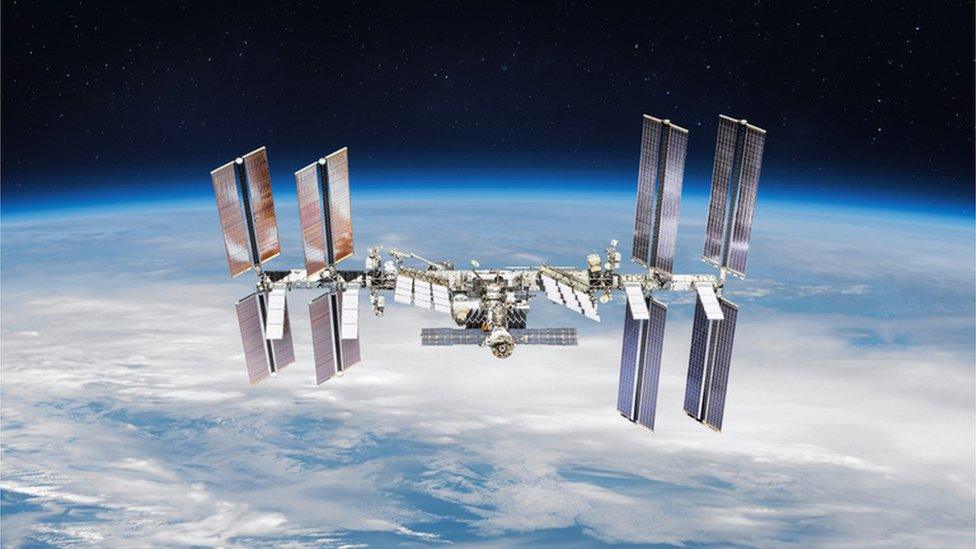How code written by young people will be powering a computer on the ISS
- Published
- comments

Astronauts on the International Space Station do all sorts of scientific experiments but could you help?
Do you dream of going to space?
Well, that could still be a few years away, but something you have created could be making its way up there as early as next year!
The European Space Agency (ESA) has asked young people all over Europe and Canada to write simple computer programmes that can help with scientific investigations on board the International Space Station (ISS).
The coding, written by children, will run on computers being be used to measure humidity (how much water vapour is in the air) on the ISS - they can also send a 30-second personal message.
It's not a competition - if you or your class send your code, it WILL run on the Astro Pi computer on the ISS!
British astronaut Tim Peake used an older version of the Alpha Pi on his mission to the ISS in 2015.
Two Raspberry Pi computers will be sent up to the International Space Station (ISS) later this month to help power the Astro Pi Challenge: Mission Zero.
The new computers will replace older, less-advanced models called Ed and Izzy that were originally deployed as part of Tim Peake's Principia mission in 2015.
The educational project is run by the Raspberry Pi Foundation in partnership with the European Space Agency.
Coding - what is exactly is it and what does it do?
Children and teenagers are being asked to write simple computer codes, using info on the project website, to conduct an experiment that can then run on the International Space Station (ISS) computers.
The mission is aimed at coding beginners and primary school children and aims to encourage more young people to become interested in science, technology, engineering and maths (STEM) subjects.
The new computers will be launched on board the SpaceX Dragon cargo rocket from the Kennedy Space Centre.
What is an Astro Pi?
Check out the Astro Pi in all it's glory!
The ESA say the Astro Pi is a small "credit card-sized bare-bones computer" called a Raspberry Pi, housed in a special case that is suitable for space.
It also has an add-on part called the Sense HAT, made specifically for the Astro Pi mission.
The Sense HAT has a joystick; an LED display; and sensors for recording the lighting conditions, temperature, humidity, pressure, and orientation.
British ESA astronaut Tim Peake said: "STEM really does help young people reach for the stars.
"I had the privilege to take the first Astro Pi computers to the International Space Station in 2015.
"Since then, more than 50,000 children have run experiments and sent messages into orbit."
